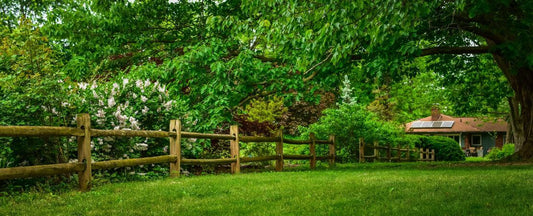Water-Loving Plants for Damp Areas

What to Plant In Areas that Hold Water
My backyard slopes down to a low spot just beyond my back window. Water pools there. In winter it is a small frozen puddle. In spring, a mucky spot to walk around, not through. By late summer it is nice and dry, but the plants have died.
Water in the soil fills the tiny air spaces (called capillaries), found in all soils except those with the tiniest particles (fine clays). Roots are alive and, like all living things, require oxygen for respiration and to release carbon dioxide. The capillaries allow oxygen into the soil and an escape route for carbon dioxide. Rain seeps into the capillaries, filling them and pushing out the oxygen, and then drains down to the groundwater. In a coarse soil with lots of big particles, such as sand, this happens rapidly. It happens, but much more slowly, in a fine clayey soil. If the wet spot does not drain downward, the water stays in the capillaries keeping them airless, until it evaporates off the surface, a process of several to many days.
Most plants, adapted to growing in normal soils where the capillaries are air-filled most of the time, cannot long tolerate lack of oxygen to their roots and the roots suffocate (drown). If all of its roots drown, the plant dies. It doesn’t matter if by July the spot is dry and the capillaries are full of oxygen again, only dead plants stand in that spot.
It is hard, as the gardener, to realize that the damage starts after about 24 hours. Often I don’t walk my whole yard for three days. But I can see the results: brown plants in that low spot. Alas, my pretty echinacea! Spots that stay soggy for several days more than once a year are likely to be dangerous to plant survival.
After learning the hard way, I started looking for plants that tolerate to flooded soils, and, wow! what a difference it made! My striking success was bee balm, Monarda didyma. About the same height as the late echinacea (three feet), this native mint has beautiful bright red-purple flowers. It has flourished in that soggy spot. Pollinators love it.
I am planning to move irises there as well, blue or white for contrast. I love irises: big bright flowers and, because the rhizomes are on the surface, easy to move successfully. I am, however, looking for just the right irises. There are 100s of varieties of iris. I do not want one from a marsh that needs standing water all year or one that struggles in wet soils. I’m looking for “moist to wet” in the water requirements.
If I hadn’t succeeded so well with bee balm, I’d put a rose mallow into the wet spot. A number of Hibiscus varieties, native and hybrid, are called rose mallow, and many of them, native to wet areas, have maintained flooding tolerance in cultivation. They have gorgeous hibiscus flowers. They require a bit more space than the bee balm, however.
Both canna (Canna species) and calla lily (Zantedeschia elliottiana) will grow well in a spot that is periodically flooded, but they are not frost-tolerant and in my climate the rhizomes have to be dug up and brought in for the winter. They are so beautiful that one of these years I’ll just do it anyway.
For a hardy shrub that tolerates flooding, try winterberry, Ilex verticillata. And if you have space for a tree and are USDA Zone 5 or higher, plant a magnolia (especially Magnolia virginiana but many other hybrids will tolerate a moderate period of flooding).
From being a problem, my wet spot turned into an opportunity, and I am sorry it isn’t a bit bigger. I would so love a magnolia and the reclassification of the USDA Plant Hardiness Zones says it would survive. Wet spots are both problems and opportunities.







